What is tidal energy?
The tidal energy is due to the forces of gravitational attraction between the Moon, the Earth and the Sun. The tidal energy is that which results from taking advantage of the tides, that is, the difference in average height of the seas according to the relative position of the sea. Earth and the Moon, and that results from the gravitational attraction of the latter and the Sun over the water masses of the seas. This difference in height can be exploited by interposing moving parts to the natural movement of rising or falling waters, together with channeling and deposit mechanisms, to obtain movement in an axis. Through its coupling to an alternator, the system can be used for the generation of electricity, transforming the tidal energy into electrical energy, a more useful and usable energy form. It is a kind of clean renewable energy.
The tidal energy has the quality of being renewable, while the primary energy source is not exhausted by its exploitation, and it is clean since in the energy transformation no gaseous, liquid or solid contaminating byproducts are produced. However, the relationship between the amount of energy that can be obtained with the current means and the economic and environmental cost of installing the devices for their process have prevented a notable proliferation of this type of energy.
Other ways to extract energy from the sea are: waves, wave energy; of the temperature difference between the surface and the deep waters of the ocean, the oceanic thermal gradient.
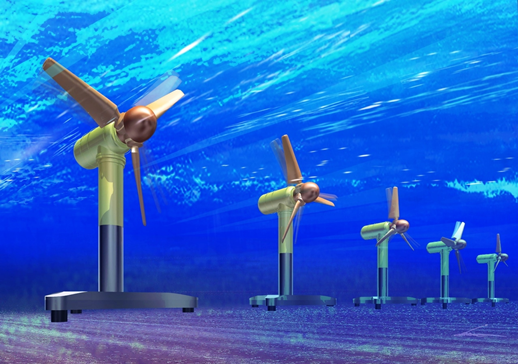
How does tidal energy work?
The system consists in capturing the water at the time of the high tide and releasing it, forcing it to pass through the turbines during low tide and in some plants, the opposite process is also used to generate energy. The terrestrial and lunar gravitational energy, solar and wind energy give rise, respectively, to three manifestations of the energy of the sea: tides, thermal gradient, and waves. From it, energy can be extracted using the appropriate devices.
Tidal or tidal energy is harnessed by packing sea water into natural inlets and passing it through hydraulic turbines.
The slight temperature difference between the surface and the depths of the sea (gradient term), is a source of energy called tidal.
The energy of the waves is produced by the winds and is very irregular. This has led to the construction of multiple types of machines to make possible its use.
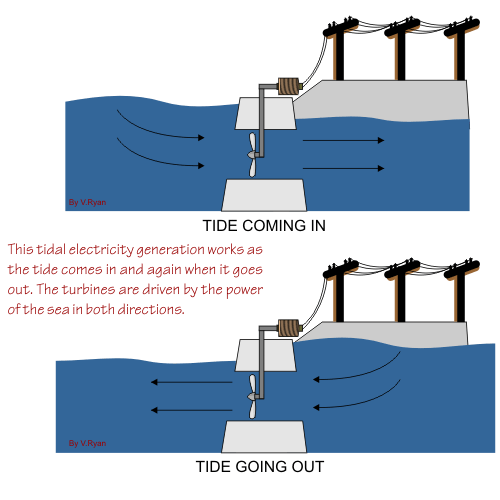
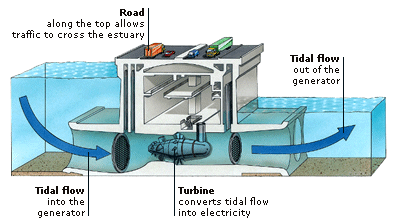
Marine turbines
Horizontal axis turbines
This system extracts the energy from the currents in a manner very similar to that of the
wind turbines, by the horizontal flow of fluid, water in the case of turbines
submerged and air in the case of wind turbines. The flow of water rotates the rotor
generating a lift due to the flow around the blades, this movement
rotational is used to generate electricity. These systems can be housed in housings
to accelerate the fluid that passes through the rotor to increase the energy extracted.

Vertical axis turbines
This type of turbines extract energy in a similar way to those of horizontal axis, but its axis
The rotation is placed so that the water flow is perpendicular to the direction of the marine current. Some vertical axis turbines are designed so that
work under the principle of drag and lift the aerodynamic profiles.
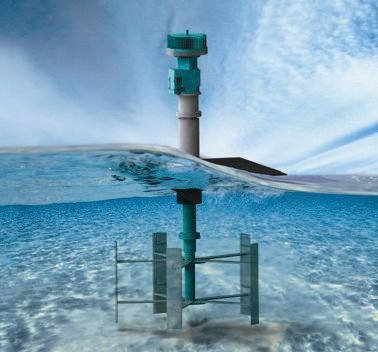
Different types of turbines
SEAGEN
This type of turbine is developed by Marine Current Turbine, it is an axis turbine horizontal, with two rotors per system subject to a central pile. This turbine currently provides a 1.2 MW power.
Description
The SeaGen is composed of two rotors of horizontal axis with a diameter of 16m each
One, each rotor is accompanied by its gearbox and its generator. The output of the generator is accompanied by a rectifier, a converter, and a final transformer
in order to be able to link toh the distribution network. Each rotor is independent of the other for being able to have a wide range of operability. The rotors have total control of the shovels to adjust their leading edge depending on the current and the energy that we want to extract, and thus be able to obtain energy both in the rise of the tide and in the drop, having the system of total adjustable blades is devoid of a mechanism that rotates the global set of the system for its orientation. The system by owning central pile, the set of turbines can be elevated above sea level by means of a lifting mechanism and thus be able to be repaired or carry out the work of maintenance.
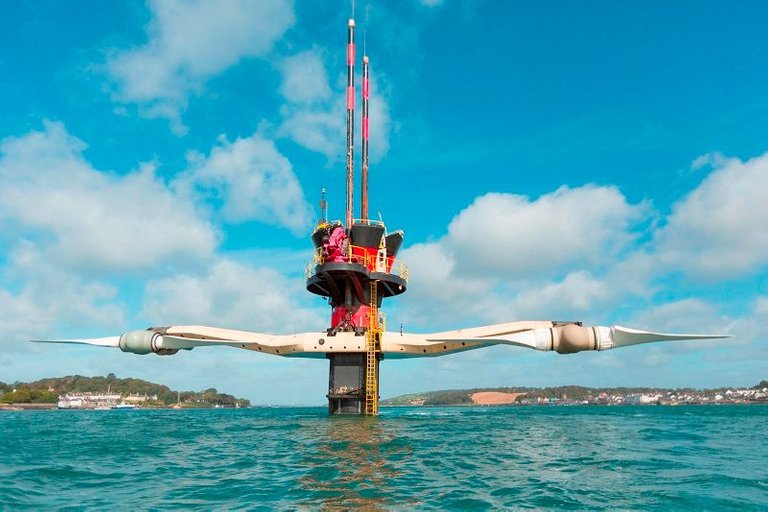
OPEN-CENTRE TURBINE
This turbine is of the type of rotors with outer shell of the company OpenHydro with a
unit power of 0.3MW.
Description
The Open-Center is a turbine supported on the seabed consisting of a rotor, housing, Stator, and generator. The rotor has the peculiarity that it is a series of vanes disposed of the almost continuous way leaving a central gap, where in theory should go the core, this aims to pass animal life through the rotor and minimize impacts environmental issues regarding marine animals. The flow of water from the marine current passes go through the casing that causes a Venturi effect that accelerates the fluid by moving the turbine.
In this type of artifacts, the only moving part is the same rotor, having a generator magnet housed in the housing around the rotor. This device is designed to be ablel to scale output power without the use of the gearbox, which reduces notably the total number of components.
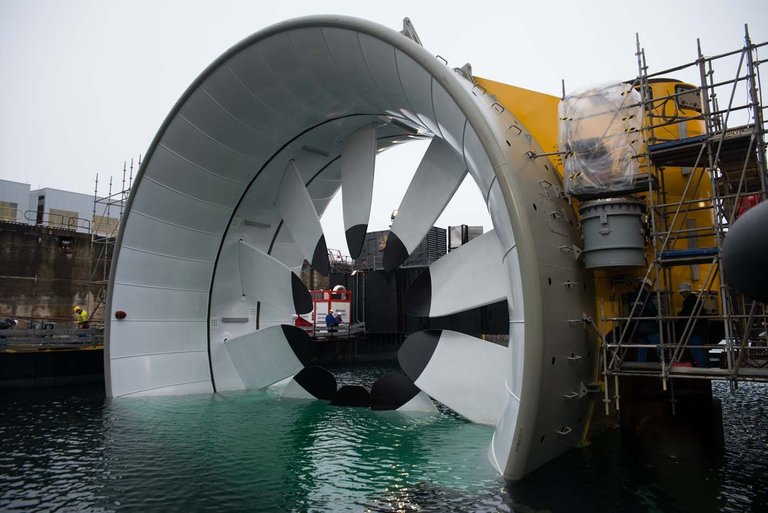
AR1000
This turbine is of horizontal axis developed by Atlantis Resources Corporation with a power of up to 1MW.
Description
The AR1000 is a 3-blade horizontal axis turbine without a mechanism for orientation of the shovels and with a system of turning of the artifact to orient, it according to the direction of the flow of the current. It has a permanent magnetic generator. The energy extracted is evacuated by cables up to 3.8kV to a substation on land. The AR1000 is designed to obtain the nominal power with flow rates of 2.65m / s. Atlantis advocates a system installation as simple as possible to avoid potential points of failure, that's why he has devised an anchorage system to the seabed that consists of the bottom structure is installed first and then the turbine is anchored to this structure with a simple female / male system in order to speed up installation or later replacement of the turbine.
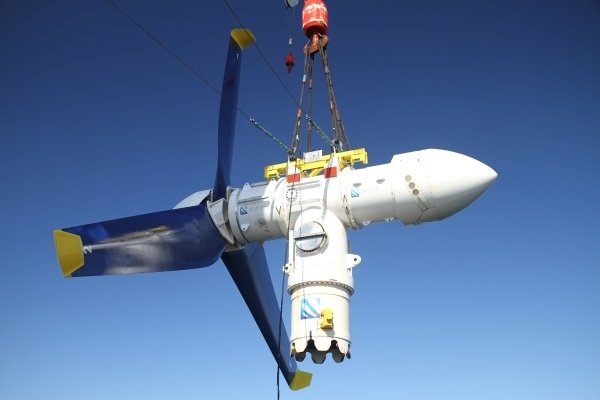
HS1000
This turbine is of horizontal axis designed by Andritz Hydro Hammerfest with a power of 1MW.
Description
The HS1000 turbine is a horizontal axis turbine, with three adjustable blades installed in the line of the flow direction of the stream. The housing houses the gearbox, the asynchronous generator and control systems, the submarine cable is responsible for evacuate electricity to the ground where the converter is located. The basis of the structure rests by gravity on the seabed.
The turbine is equipped with numerous measuring instruments so that in a future is also a platform for research and development activities. This will help improve the reliability and performance of this type of artifacts and in the future
help reduce the costs of this technology.
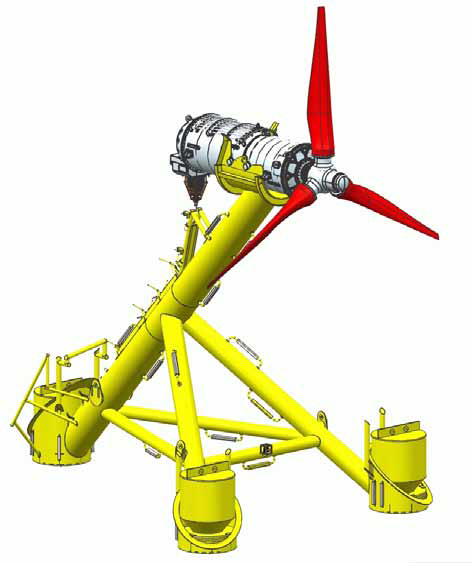
VOITH HY TIDE 1000-16
This turbine is a horizontal axis turbine developed by the company Voith Hydro Ocean Current Technologies with a predicted power of 1MW.
Description
The Deep Gen IV turbine has a horizontal axis with three adjustable blades, the way to extract energy is that it is always oriented by a turning mechanism facing the current When the tide rises it is oriented in one direction and when the tide goes down the turbine turns that affects his face. The gondola is designed so that it can float so that the entire turbine, with the Support structure included, can be towed to the chosen location for your installation. The supporting structure is a light structure in the shape of a tripod that anchor to the seabed. The turning system is aft of the blades. Once the address is set of the flow the turbine has a minimum cutting speed of 1m / s, its design speed is of 2.7m / s. For higher speeds, the orientation of the blades and the regulator come into play of generator torque to ensure that the rated power of the turbine is maintained. This turbine also has a gearbox.
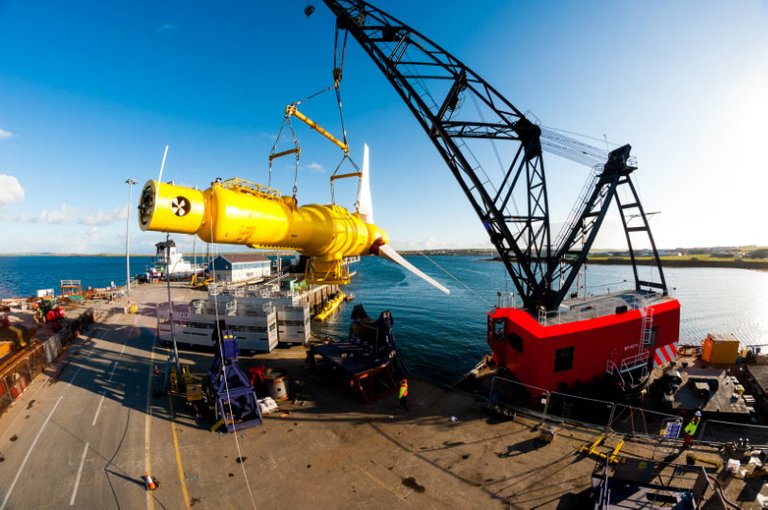
The above mentioned are just some of the generating turbines that currently work in the world. Thank you for reading.
For additional information visit the following links:
http://www.monografias.com/trabajos93/energia-mareomotriz/energia-mareomotriz.shtml
http://www.ingenieros.es/noticias/ver/turbinas-submarinas-para-generacion-electrica/2444
http://www.energiasrenovablesinfo.com/oceanica/energia-mareomotriz-ventajas-inconvenientes/
You, like many of the supporters of tidal energy, do not cover the problem of power transmission. Something that is very easy to do in open air, due to the resistance of air, is not easy (or cheap) to do with salt water. Since turbines will generate AC current you will also need to either go through a full-bridge rectifier (after a step-p transformer) and transfer energy through HVDC lines or else will require very very very thick insulation and a lot of transformers (more in air) due to the changing electro-magnetic field causing electric currents the be created in the ionized (and ion filled) salt water causing greater resistance in the transmission of power (proportional to distance)
There is also the problem of many of these requiring constant and very expensive maintenance (Salt water is very bad for mechanical systems, plastics are also bad for these systems) and it becomes exponentially worse than wind power or other types of power. In most places (even coastal areas) it is actually less feasible to use this than it is to use wind or solar, or coal.
Congratulations @mariselal! You received a personal award!
Click here to view your Board
Congratulations @mariselal! You received a personal award!
You can view your badges on your Steem Board and compare to others on the Steem Ranking
Vote for @Steemitboard as a witness to get one more award and increased upvotes!